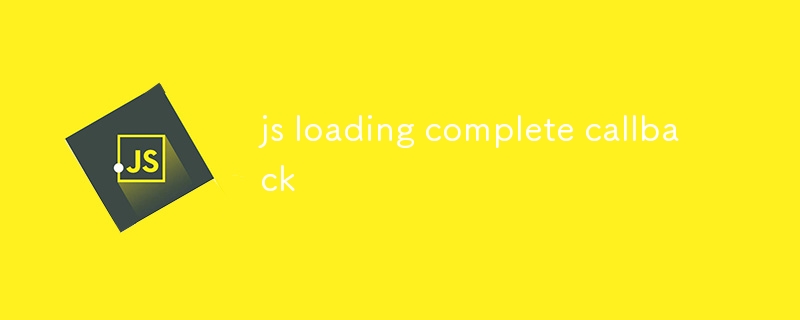This article explores best practices for managing the execution order of multiple asynchronous tasks in callback functions when JavaScript loads. It discusses three approaches: Promises, Async/Await, and Event Listeners, highlighting their advantages

How to Gracefully Handle the Execution Order of Multiple Asynchronous Tasks in a Callback Function When JS Loads
When multiple asynchronous tasks are executed in a callback function, it's crucial to manage their execution order to ensure proper functionality and avoid race conditions. Below are some approaches:
-
Use Promises: Promises allow you to chain asynchronous tasks and control their execution flow. You can use
Promise.all() to wait for all tasks to complete, or Promise.race() to execute the first task that finishes.Promise.all() to wait for all tasks to complete, or Promise.race() to execute the first task that finishes.
-
Use Async/Await: Async/await is a syntax that simplifies promise handling, enabling you to write asynchronous code in a more synchronous-like manner. You can use
await
- Use Async/Await: Async/await is a syntax that simplifies promise handling, enabling you to write asynchronous code in a more synchronous-like manner. You can use
await to pause execution until a promise resolves.
Use Event Listeners:
Event listeners can be used to listen for specific events triggered by asynchronous tasks. This provides a more declarative way to handle task execution and ensures that tasks are executed in the correct order.
Best Practices for Improving the Readability and Maintainability of Callback Functions
- To enhance the readability and maintainability of callback functions, consider the following best practices:
- Define Clear and Meaningful Names: Give your callback functions descriptive names that reflect their purpose, making them easy to understand and differentiate.
- Keep Functions Concise: Break down complex callback functions into smaller, reusable chunks. This improves readability and reduces the likelihood of errors.
- Use Error Handling: Implement robust error handling within callback functions to catch and handle errors gracefully, preventing the application from crashing.
- Provide Type Annotations: Use type annotations to define the expected types of arguments and return values, enhancing the function's readability and ensuring type safety.
Follow Coding Standards:
Adhere to a consistent coding style to improve the overall consistency and readability of your codebase.
How to Utilize Callback Functions for Cross-Origin Communication
- Callback functions can facilitate cross-origin communication, allowing data exchange between websites from different origins. The process involves the following steps:
- Create a JSONP Callback: JSONP (JSON with Padding) allows you to request data from a different origin by appending a callback function name as a parameter to the request URL.
- Define the Callback Function: On the requesting website, define a callback function that will receive the data from the remote website.
- Make the JSONP Request: Make an HTTP request to the remote URL, including the callback function name in the query string.
- Parse the JSON Response: On the remote website, package the response data as JSON and invoke the callback function, passing the data as an argument.
Handle the Response:🎜 On the requesting website, the defined callback function receives and processes the response data accordingly.🎜🎜
The above is the detailed content of js loading complete callback. For more information, please follow other related articles on the PHP Chinese website!






